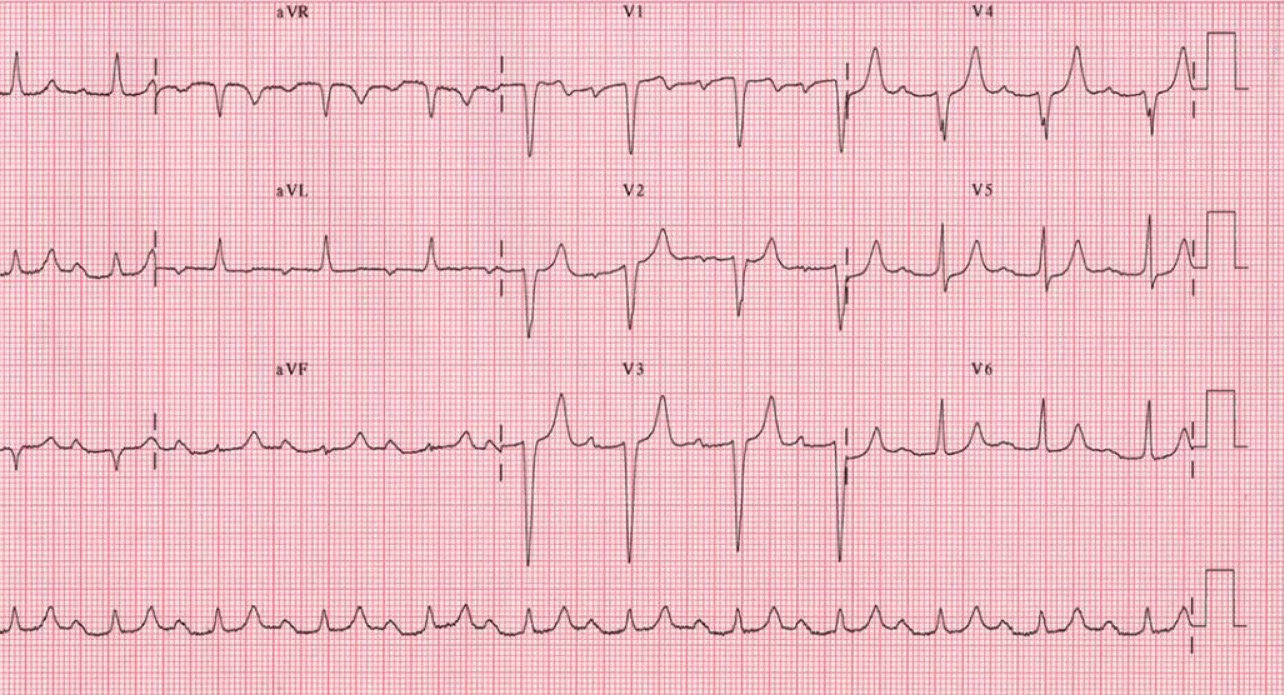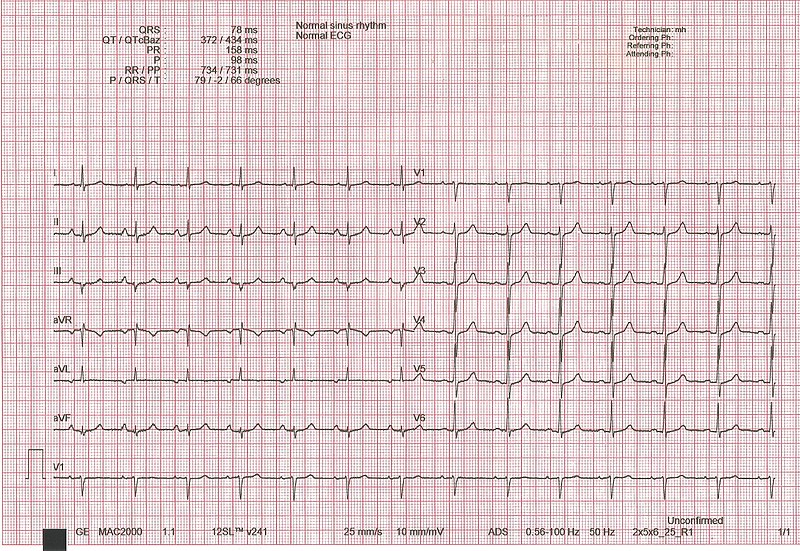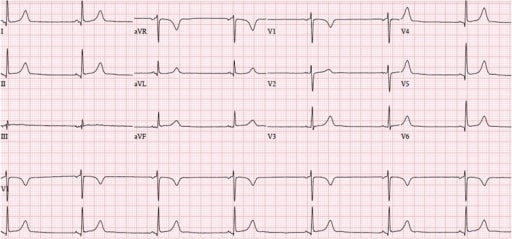Playlist
Show Playlist
Hide Playlist
Second Degree Heart Block
-
Slides Bradyarrhythmia CardiovascularPathology.pdf
-
Download Lecture Overview
00:00 be increased of vagal tone. Let us now move on to second degree. Now things get a little more complicated, but stick with me here. Under second degree AV block, there will be two subtypes that you, at least, want to know. At least want to know two subtypes. 00:17 The first one is called Mobitz type 1. Mobitz type 1 from henceforth if you want to pronounce 1 as when why not? Because this brings us to Wenckebach. So Wenckebach is specifically Mobitz type 1. What kind of heart block are we dealing? Our topic at hand second degree AV block. What have we completed with discussion? Our first degree, we are done. 00:40 That was every single PR interval was fixed and prolonged with first degree. Second degree is different. The EKG here if you take a look at the PR interval, the first one normal. 00:50 The second one a little bit longer. The third one even longer. Fourth one, oh! my, the PR interval the P wave is there, I don't find any QRS complex. That is my problem. So if you take a look at this EKG, you will find that the PR intervals are prolonging progressively, then the QRS complex drops spontaneously abruptly. What happens subsequently? It comes back to normal. What does? The PR interval. The PR interval would be normal on that first strip rhythm, the second one, the PR interval will be a little bit longer and by this that's what I mean to say, you really want to know what a little box is. What is that little box time? 0,04. What is the big box time? 0,2 seconds. Do you remember that? So, therefore, if you find progressive prolongation of PR interval with a drop in your QRS complex, this to you represents a second degree Mobitz type 1 a.k.a. Wenckebach. This is a frequently tested rhythm. You want to know it? Yes, you do. Beat has dropped. Don't forget that. Subsequently, things come back normal and you begins the cycle again. That completes our discussion of Wenckebach. 02:09 Let us move on to Mobitz type 2. Before we do so, though, I want you to take a look at the bottom strip here. On the bottom strip, you will notice that the PR interval is progressively getting long and then in certain rhythms here, you will find that the QRS complex is not even present and then once again you begin that cycle of progressive prolongation of your PR interval. Spend a minute or two. Take a look at the bottom strip, understand what I said in terms of definition. This is still Wenckebach but what may happen? Because on your license exam or in attending, in which you moved into a cardiology rotation will hand you a 12 lead ECG and what is your reaction? Smile, take it and look like you know what are you doing, because you do. Once you panic, game over. Okay. So don't panic please. Take a deep breath whatever it is. Every single patient, every single question, every single piece of paper that you get is kind of like how an ER does triage, okay. If you prioritize and maintain composure, once you panic everything in front of you is going to die, including your patient. Maintain composure at all times. It is amazing what you are capable of doing. Believe in yourself. This is Wenckebach. You got this, move on. Progressive prolongation, your QRS-drop takes place. 03:30 Talk about second degree AV block and talk about type 2. This is interesting. Here the bottom line is, P wave without subsequent QRS complex and no change of your PR interval. You see that? So here we will have a heart block, a second-degree type, Mobitz type 2. That PR interval is going to be within normal range. Once again what is your normal range? 0,12 to 0,2 seconds. Here it will be within normal range, but the QRS complex certainly dropped. There is no cycle per se. That is the biggest difference between Wenckebach, Mobitz type 1, Mobitz type 2. Both of these come under what please? Second degree AV block. Let us move on. Here you will notice the PR interval, the bottom strip is the most important one. It is the normal PR intervals then every once in a while, the QRS complex is not present, but there is no cycling here of progressive prolongation. Once again you might be given a 12 lead ECG. You go with the basics, you look for that P wave, you look for an upright QRS complex after your P wave, you take a look at the PR interval. Take a look at the ST segment. Take a look at the T wave and make sure that you know the basics here. Take a look at the rhythm. How did you figure out the rhythm? The number of lines between the R waves. What was your phone number? My phone number is 300, 150, 100, 75, 60, 50. What does that mean? Each one of those numbers that I have mentioned would be the number of lines that are separating the R wave. Call me. I will be available to you, anytime. Move on. Now we are going to third-degree AV block.
About the Lecture
The lecture Second Degree Heart Block by Carlo Raj, MD is from the course Arrhythmias: Basic Principles with Carlo Raj.
Included Quiz Questions
Which of the following is a common feature between Mobitz type I and Mobitz type II heart blocks?
- QRS complex drops every few cycles.
- PR interval >0.2 s
- Progressively prolonged PR interval.
- Both are typically asymptomatic.
- QRS complex drops with every two cycles.
Which of the following is true regarding Mobitz type 1 (Wenckebach) AV block?
- There is not a corresponding QRS complex for every p wave.
- It is also called third-degree heart block.
- It is a type of first-degree heart block.
- The PR interval is constant but increased.
- The P waves appear to be coming from a ventricular origin.
Which of the following is true regarding the Mobitz type II AV block?
- The PR interval is between 0.12 to 0.20 seconds.
- The PR interval is greater than 200 milliseconds.
- The PR interval is variable between different heartbeats.
- It is a type of complete heart block.
- It is a type of third-degree heart block.
Customer reviews
4,5 of 5 stars
| 5 Stars |
|
1 |
| 4 Stars |
|
1 |
| 3 Stars |
|
0 |
| 2 Stars |
|
0 |
| 1 Star |
|
0 |
Such a great and objective lecture! Amazing teacher and materials, thank you
Very much appreciate his teaching style, but does stray some at times.






